
Although I’m not a true digital nomad and juggle my many travels with a day job, I’ve done my part in planning and organizing. Having organized probably hundreds of trips—from weekend getaways to week-long road trips—I’d argue that few people know better than me how to plan a trip from scratch. Planning from step one has become second nature to me.
And in fact, helping others plan their travels was one of the main reasons I started writing this blog—always true to the motto If I can, you can do it, too.
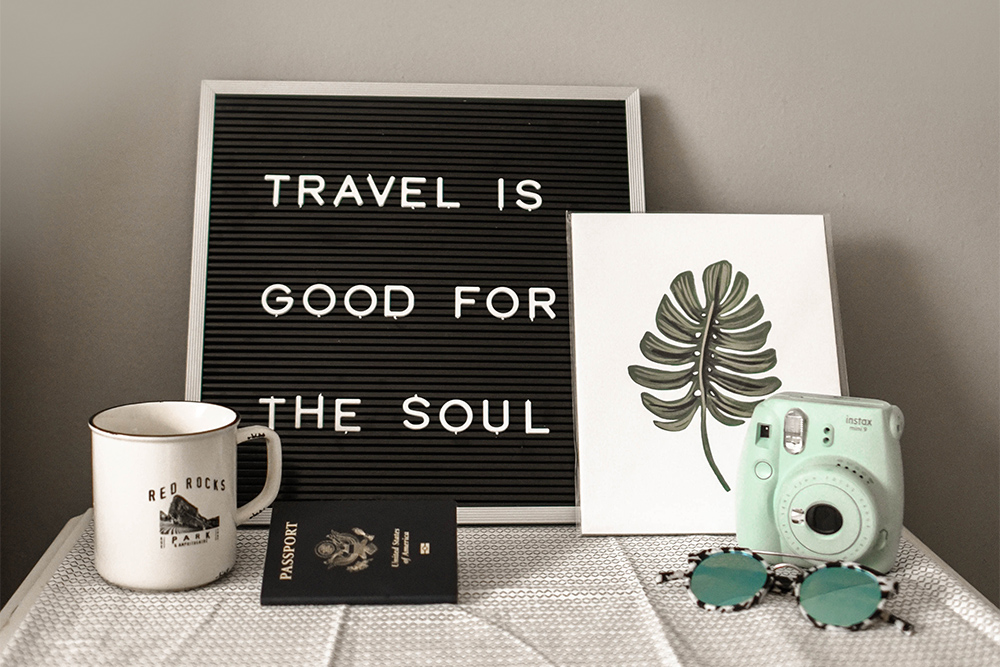
(Photo: Element5 Digital from Pexels)
Nevertheless, I analyzed and then structured what I’ve been doing habitually for years to make my own travels smooth and fun.
I’ve put the structure into words and divided it into chronological chapters. This way, even those who are completely new to travel planning can put together the trip of a lifetime. Of course, without the help of large, expensive companies.
And I’m sure that even experienced globetrotters will find a tip or two in this post.
Once you’ve mastered it for your first destination, the next one will be a breeze. And all the trips to come, too. Because life is long enough for far more than just the one trip of a lifetime!
If I Can, You Can Do It, Too
The strategy described is exemplary and based on a roughly two-week trip to Sicily. It can be applied to solo travelers, couples, families, or groups. However, the concept and structure can be applied to both short trips and multi-month cross-continental travels. The individual steps remain the same regardless of the planned trip duration.
If you’re travelling for a longer period, you may not need to plan quite as rigorously in advance. Getting stuck somewhere or losing a few days obviously doesn’t matter as much on a long trip as it does on a short multi-day excursion.
If you have limited time and want to see as much as possible without mindlessly rushing, the following approach will certainly help you make the most of it.
In the following four steps, I’ve outlined how I do it and how it’s worked for me for years.
I’ll leave it up to you to follow my strategy step by step or simply get some inspiration and new ideas.
There’s an additional chapter at the end that offers you a safety net—just in case. If you’re still a bit hesitant, my encouraging strategies in the post How to Surpass Pre-Travel Anxiety will certainly help.
With this thorough planning, I want to inspire and encourage you to try solo travel.
If I can do it, there should be no reason why you can’t, too – and I’m here to help!
Choosing a Destination
I’m presuming everyone has a specific dream destination. Or perhaps you have even an entire list of places they absolutely want to visit. Hence, I certainly don’t need to give you any ideas. However, for your first self-planned trips, some places are more recommended than others. This is especially important to consider if you’re travelling alone.
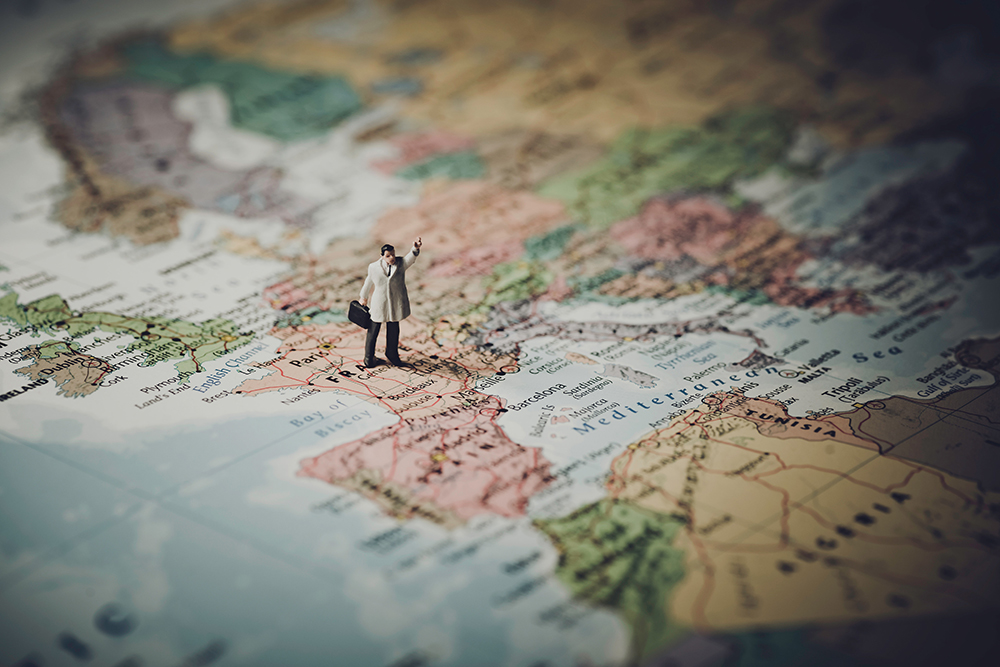
(Photo: slon_dot_pics from Pexels)
Travelling through European countries should be very easy and convenient, regardless of your choice of mode of transport. There’s a well-developed public transportation network practically everywhere. And finally, you can, of course, rent a car.
In the USA, everything is fine as long as you’re travelling by car. However, solo travellers should keep in mind that travelling by car is inevitably lonely. In contrast, trains, long-distance buses, and ferries are good places to meet fellow travellers.
I don’t drive, hence I always use public transportation. So far, that’s been possible practically everywhere, also in places where even locals claimed it wasn’t doable. Admittedly, it can be a bit complicated and tricky in places. However, I have had decades of experience that, with a little research, good preparation, and a bit of flexibility, it is possible to travel by public transport almost anywhere.
Solo Travel Across the Continents
Travelling solo in Asia is generally a very good idea. Yet, not all of Asia is the same. There’s a huge difference whether you’re traveling solo through Japan and South Korea or if you are exploring Thailand and Viet Nam.
I would only recommend the first two countries if you’re really comfortable being alone for extended periods of time without significant human interaction. While solo travel doesn’t necessarily mean being alone, in Japan and South Korea, it certainly does. It’s generally more difficult to connect with locals in Asia. But in Japan and South Korea, interaction between fellow travellers is also minimal. This is different in other Asian countries due to the distinctive travel cultures. You’ll meet backpackers in simpler guesthouses, there are bars frequented by travellers, and everything is much more open and communicative.
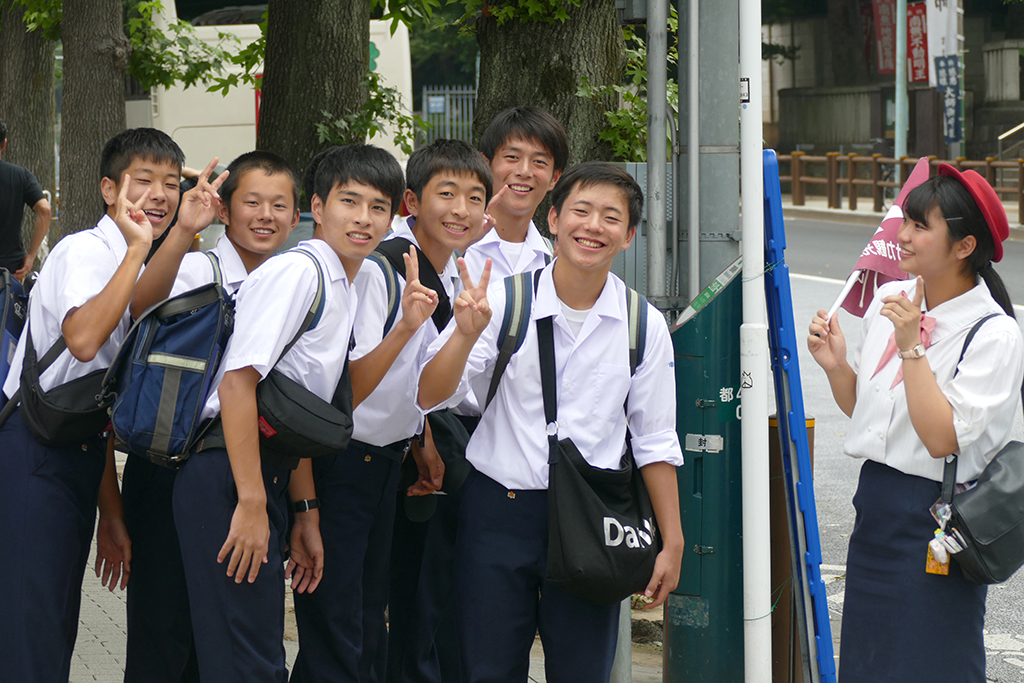
However, I need to highlight that Japan and South Korea are the best places in the world if you’re concerned about safety. Everything is super-organized, there’s no vandalism, and you won’t be accosted. You certainly won’t become a victim of petty crime, even if you’re not constantly watching your belongings like a hawk. As a long-time solo traveler, I’ve found this to be an incredible relief and a great luxury!
Travelling in Gaggles
Nevertheless, since the traveller community is far more developed in Southeast Asian countries such as Thailand, Viet Nam or even Malaysia, I highly recommend those for your first self-organized trip. Even as a solo traveller, you’ll meet many fellow travellers – individuals, couples, and groups, both men and women. At the same time, there is a decent system of long-distance buses shuttling travellers comfortably between the most popular destinations. In Malaysia and Thailand, you can even travel by train.
Then, you also have the option to join organized trips to popular points of interest. This allows you to get in touch with other individual travellers, if you like. You’ll find a plethora of tours’n’trips, for instance, on getyourguide*:
Another great region for solo travellers who don’t want to be lonely is Central and South America. This is also a region where backpackers and other open-minded travellers tend to flock in gaggles, which grants pleasant encounters.
My Tip
Talking ’bout South America, there are excellent options in Peru for those who want to travel independently but still enjoy the convenience of being organized. There are several options that also integrate sightseeing into the journey. Instead of simply transporting passengers from one city to another, the service includes free stops and tours at hidden gems along the route. I covered these options in the post for their respective final destinations, such as Cusco and Puno.
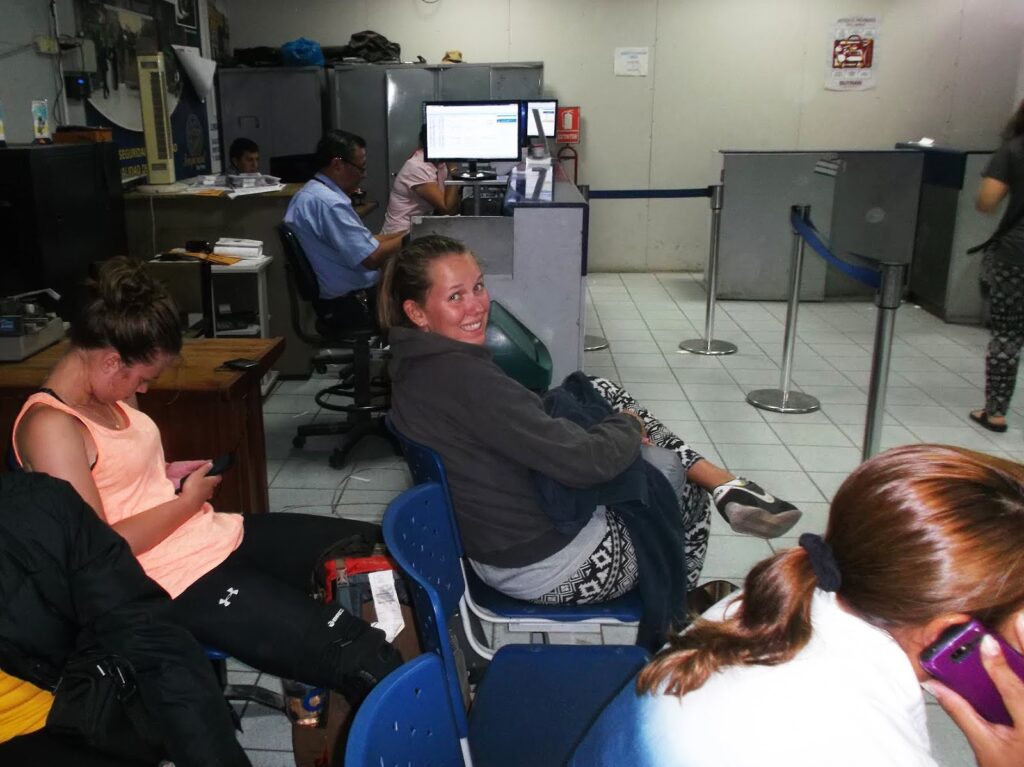
Particularly comprehensive is the schedule of Peru Hop. Peru Hop is a hop-on hop-off bus service, connecting major destinations across the country. It goes from Lima and Paracas to Huacachina, Nazca, Arequipa, Puno, and even into Bolivia.
What makes Peru Hop stand out is its flexibility. Travelers can choose passes that cover different routes and durations, allowing them to “hop off” at any destination, stay as long as they like, and then “hop on” the next bus to continue their journey.
While these tours are slightly more expensive than public buses, the added safety, convenience, and experience make them an excellent value for money. It smoothly bridges the gap between independent travel and guided tours.
It’s worth looking for similar offers in other regions of the world.
You’ll find more tips further below in the section Solo Travel With a Safety Net at the end of this post.
Putting Together an Itinerary
After choosing a destination, the first step is planning, followed by preparation.
First, determine the length of the entire trip. After gathering as much information as possible from the internet—for example, from my blog—you’ll get a realistic idea of how many places you want to visit during your tour. Of course, you can also consult a good old travel guide, as you might prefer reading on paper. Either way, this will help you decide what you absolutely want to see.

It’s handy to make a list of those places. Then, using a regular paper map or Google Maps, you can sketch a convenient route. Mark all the places you want to travel to and then see how you can visit them in the most time-efficient order possible.
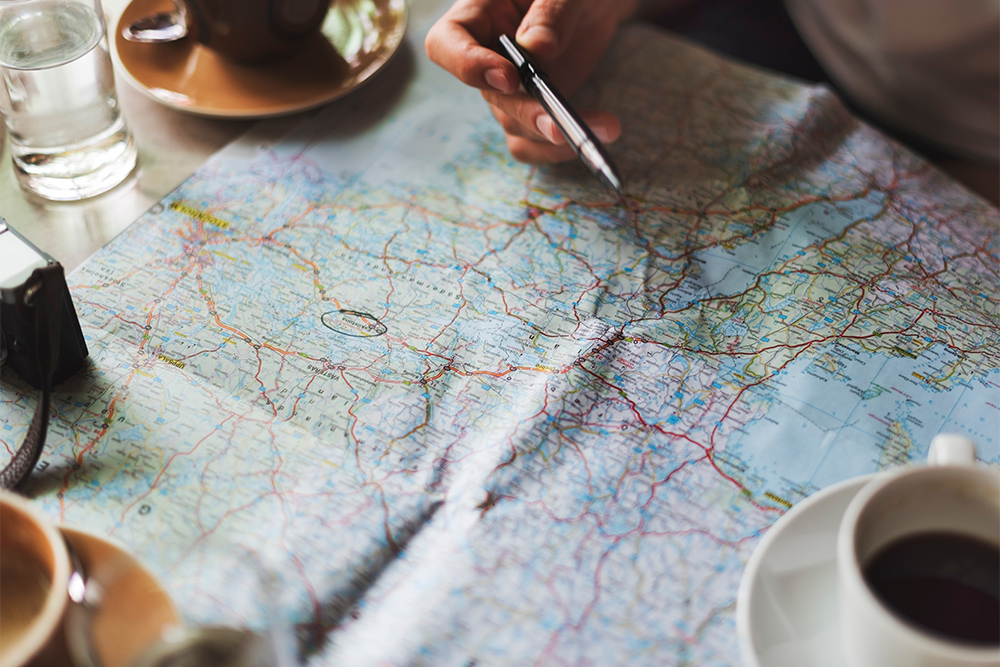
(Photo: Photo rawpixel.com from Pexels)
If you have a Google account, you can also create a Google My Map. You can then save your itinerary and adjust it anytime you want. I’ll show you in detail how to plan effortlessly with this fantastic tool in my post Travel Planning With Google My Maps.
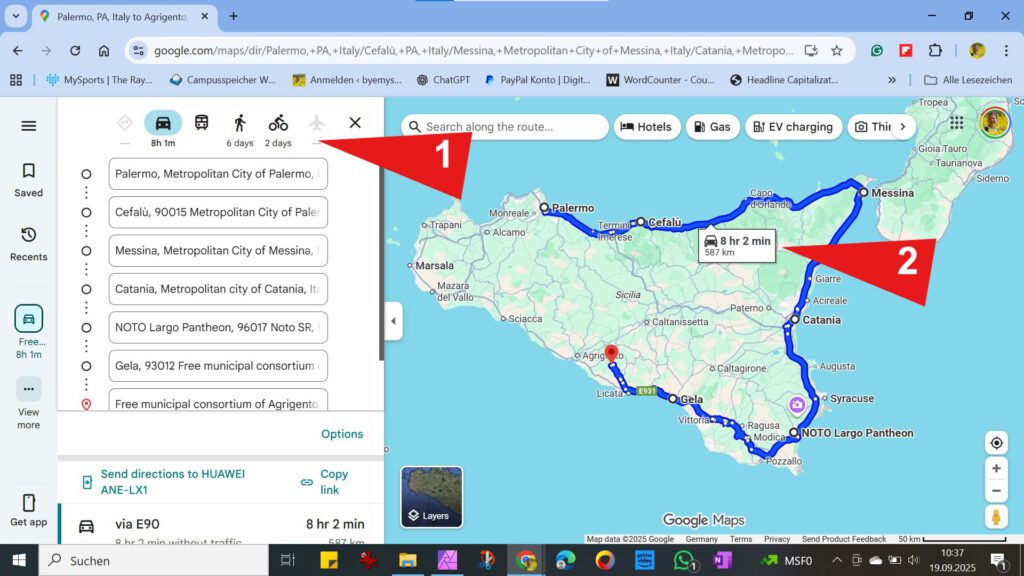
When sketching out your itinerary, you should build in enough buffer for unforeseen events. In addition, include stops where you can treat yourself to some rest, for example, at the beach or in a spa.
Don’t overpack – either your luggage or your trip!
Where to Go?
Consider how many days you have available and then divide them according to the places you want to visit. Of course, this doesn’t have to be evenly distributed: You’ll need to allocate more days for a bustling city than for a traditional village.
Perhaps your travel time isn’t enough for all the places you’ve chosen. In that case, you should reluctantly eliminate places instead of putting together an overly tight itinerary. Don’t forget that you’ll still have to travel from one place to another, and public transport might only run once or twice a day. It’s better to leave a little extra time. Trust me, you’ll be able to fill unexpected time slots with ease; you won’t get bored!

When planning the length of your stay in different places, you must not forget the corresponding travel times. For instance, in Sicily, the 320 kilometers from Catania in the east to the westernmost point of Trapani only take five hours, even by public bus. In some countries, a journey from one end to another can take 24 hours or more! You have to factor this in.
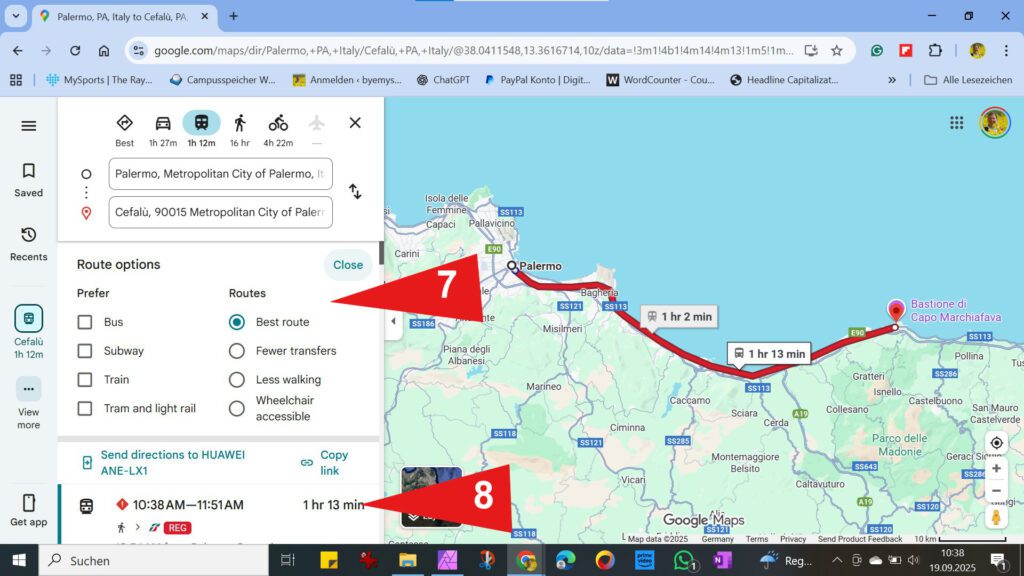
And don’t even think about calculating your journey based on distances in kilometers or miles. The journey from Hamburg to Berlin takes 90 minutes by express train. In an Asian or Latin American country, the same journey by bus takes up to six hours.
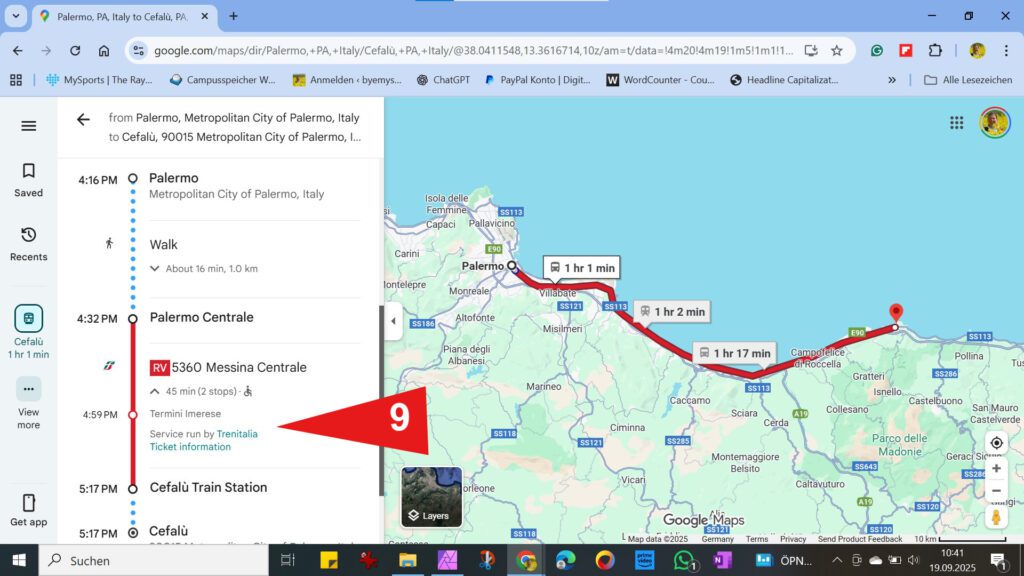
So, you definitely need to check bus and train schedules online to get a realistic idea of the journey’s length. Also, factor in possible delays and the fact that the arrival station isn’t right next to your accommodation. Therefore, you’ll need to factor in some extra time for that as well.

You can avoid major time-wasters by opting for night trips. But this is a double-edged sword. If the bus has comfortable seats and is perhaps half empty, allowing you to lie down and sleep, that might be a good alternative. But if you spend the night in an uncomfortable seat on a packed bus and only occasionally doze off out of exhaustion, the next day is ruined. Instead of happily exploring the place, you will stagger around like a zombie, looking forward to nothing more than your bed. Therefore, don’t foresee too many activities for this day of arrival
Planning Individual Stops
Planning my stays at individual locations basically works the same way as planning my overall trip. I first consult travel guides to find out what sights there are. I also use this opportunity to check when a good time would be to visit. It makes no sense to try to visit a museum that doesn’t open until 11 a.m. at the crack of dawn. I explain in detail how to ideally plan a city visit in my post Travel Planning With Google My Maps.

I generally recommend staying at least two nights in a city to ease the pressure. Of course, that’s not enough to get to know cities like Berlin, Paris, London, or Tokyo. You’ll either have to stay very long or make compromises in your planning from the start.

If a city also serves as a good starting point for day trips, plan an additional night for each of these tours.
It’s generally a good idea to arrive in a new city in the early evening. This way, you can take a short walk to get a feel for the city. I then spend the entire next day sightseeing and depart again at midday or early afternoon on the third day. This way, I arrive at my next destination early in the evening.
At beach destinations, I add about two nights to relax. This also gives me time to run necessary errands, like laundry. Although most laundromats can get your laundry done within 24 hours, it’s always safer to plan for an extra day.
Obviously, if you happen to be planning a trip to one of the countries I’ve travelled, I can supply you with a ready-made itinerary that you only need to adapt to your needs’n’wishes. You’ll find all the places I visited over the past years categorized on the homepage.
More Factors to Consider
However, putting together your itinerary doesn’t mean only checking domestic flights, trains, and buses. You should also check Public Holidays in the region you’re travelling to avoid getting stuck or paying too much. For instance, the so-called Semana Santa, hence, the Holy Week before Easter, is the peak holiday season in Latin America and Spain. Don’t even think about not booking beforehand, or you won’t get tickets and end up at the most expensive accommodations.
You should find the answer to all your questions regarding your trip, such as visa regulations, vaccination requirements, flights, and accommodations, voltage, or public holidays, in the links I assembled in my World’s Most Complete Traveller Information.
Generally speaking, many museums are closed on Mondays. However, others choose Tuesdays, so you’d better check their website thoroughly beforehand.
You should also pay the official online tourist info a visit to check if there’s something special like a theater play, a temporary exhibition, or a sporting event taking place that you’d like to see.
My Tip
You should also check the visit info of attractions you want to see, like, for instance, museums or even national parks. In the US, at many museums, there’s a sponsored day where the entrance is free or on a pay-what-you-wish basis. You might want to take advantage of that.
So after checking all this, you’ll be able to determine how long you’ll stay in each place. Possibly, you might want to adapt your itinerary accordingly.
Once you have a rough outline—i.e., you know which places you want to visit and how long you can stay there after deducting travel time—it’s best to create a clear overview. This is easily done using calendar sheets, whether online or printed. This will help you to visualize whether everything you’ve planned is realistically feasible in the anticipated amount of time.
Now you can start booking.
My Tip
If you only want to spend a short time in the place where you land, be sure to consider the possible time difference. If you fly west, you’ll gain a few hours. For eastbound flights, the time difference can cost you an entire day if you arrive only in the evening. You need to take this into account when making plans for your first destination. I made this mistake on my first couple of trips to Asia. I didn’t consider that I’d arrive only in the evening, in addition, tired from the long flight. Consequently, I just crashed. This way, having booked two nights, I actually had only one day for those big mega-cities.
Booking
My early booking, as well as early packing for that matter, is legendary. All my friends make me look like a fool, laughing at me for booking flights and accommodations, and sometimes bus and train tickets up to months ahead! But in the end, they are all jealous when I get the best seats for the best prices. What can I say: Sometimes a mild case of OCD pays off.
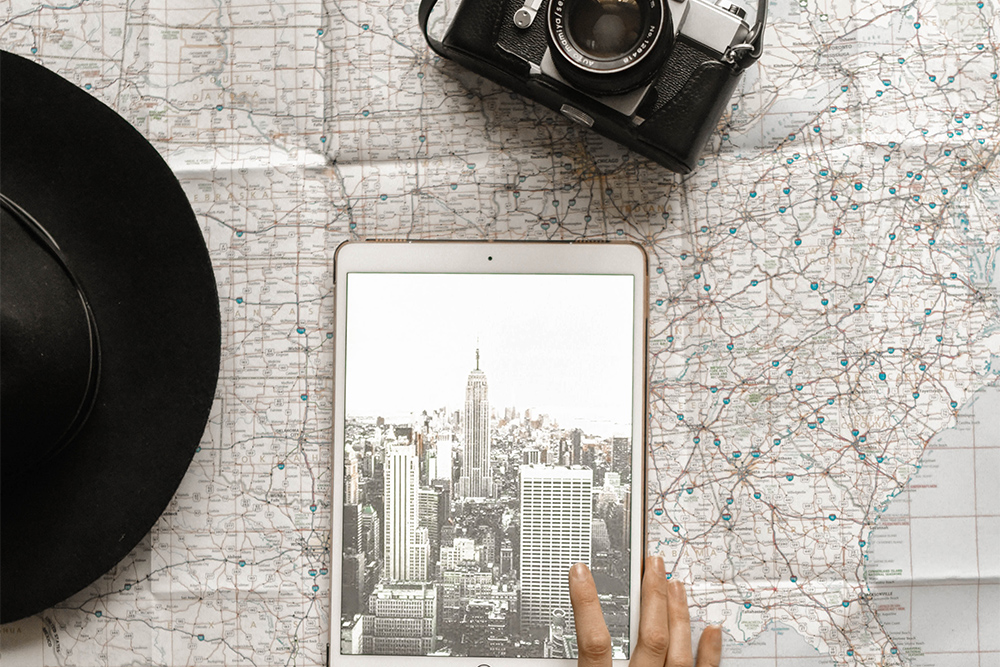
(Photo: Element5 Digital from Pexels)
Obviously, I also tend to book all my accommodations in advance. Whereby, I actually prefer those where I can cancel free of charge up to, let’s say, a week before arrival. Although I seldom change the route and dates, it does happen that I still stumble over an even better deal. Therefore, it’s good to be able to alter or cancel. However, if the deal is too good and cannot be changed, I bite the bullet.
An often-heard argument against my way of compulsive pre-booking is that it makes me inflexible. Yes, that’s true. But keep in mind that if I have only three weeks for the entire trip and I want to see, let’s say, six to eight places, how flexible can I be? There are only so few days left per place, anyway. So why not book ahead and save time and money?
Also, if you’re planning your first or second solo trip, I’m sure it’ll give you peace of mind knowing when your train departs and where you’ll be spending the night.
You can find many more valuable tips and encouragement regarding your solo travel in my post How to Surpass Pre-Travel Anxiety.
Location Location Location
One of the most important things to consider when booking accommodation is a convenient location, especially if you’re only spending a short amount of time in a city. While I speak as someone who doesn’t drive and relies on public transportation, in many big cities, you’ll likely find yourself in the same situation and prefer to leave the rental car at home and hop on the public bus.
This being said, you’ll always find accommodation recommendations in all my travel guides, along with a map showing where the accommodations are located and how much they cost. This allows you to easily choose the accommodation that best suits your needs*:
Solo Travel with a Safety Net
Maybe it’s your first trip by yourself and you feel a teeny bit insecure. Or you want to make sure to get in touch with other travellers. Or you are simply a bit lazy and want to leave the planning to others. Well, you still don’t need to go on an all-inclusive hotel vacation. There are agencies organizing either the entire route or a part of it for you. It works like the Hop On Hop Off system you know from city tours. You buy a pass, and you can join the tour on certain days at certain stops. Sometimes there are even some day trips and tours included.

(Photo:rawpixel.com from Pexels)
The biggest one covering every continent is the Bamba experience. In Asia, you have Stray Travel, and GreenToadBus drives you through South America. You can travel in Europe by www.busabout.com, Australia by www.greyhound.com.au, and in the United States, www.amtrak.com offers travel passes.
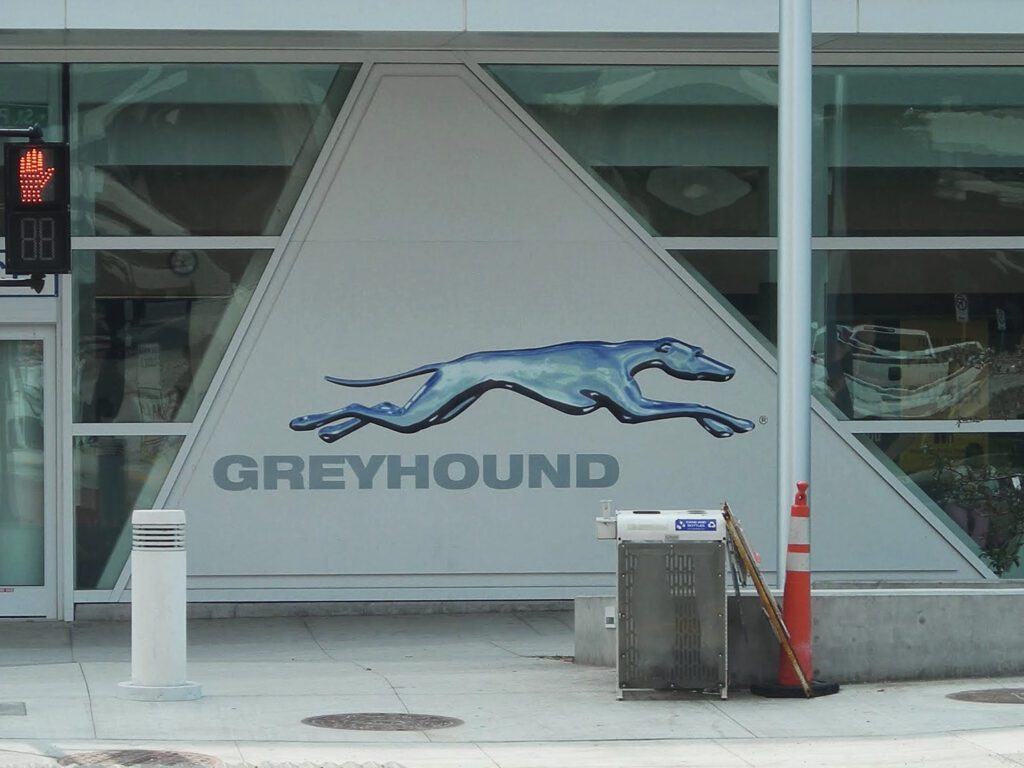
Although it’s convenient and fun, you should compare the prices to individual bookings and reconsider. Especially the tours in Asia and South America are really pricey compared to what you would pay if you organize your trip by yourself. But it is definitely an option.
If you need a final little push to step out of your comfort zone and dip your toes into the solo travel pool, I highly recommend reading my post How to Surpass Pre-Travel Anxiety.
There’s More
I’m sure this detailed guide will be a great help to you in your trip planning from scratch. However, I also put together a guide on how I plan a trip with the help of Google MyMaps. Since Google My Maps is such an amazing App when planning any kind of trip, you should definitely check it out: Travel Planning With Google My Maps.
I’m certain you’ll agree that it’s a great addition to this article.
Pinnable Pictures
If you choose to pin this post for later, please use one of these pictures:
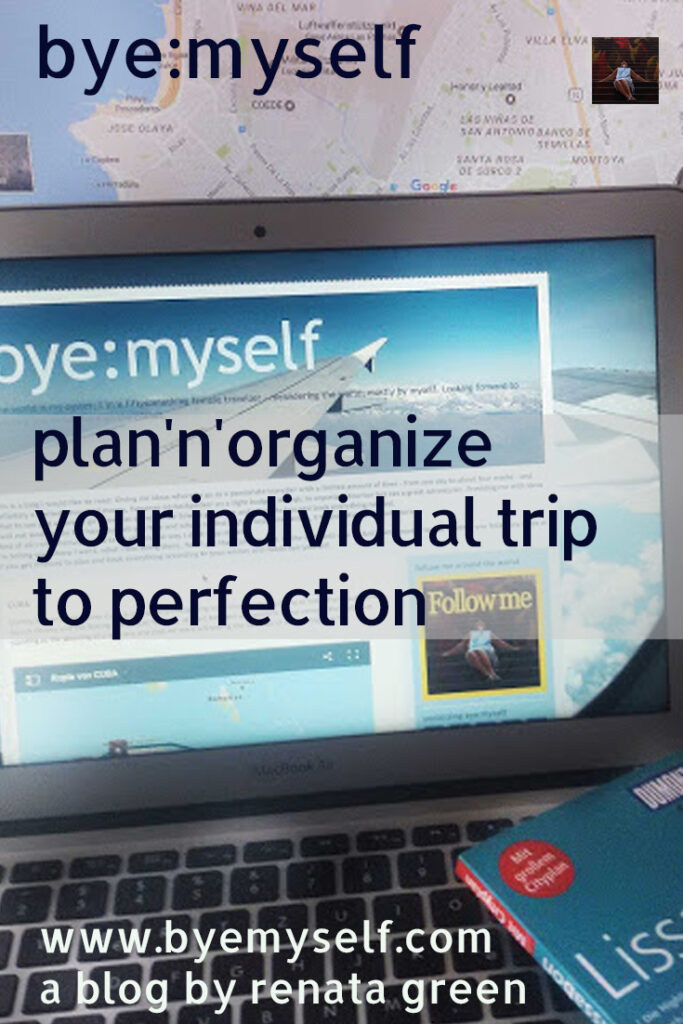
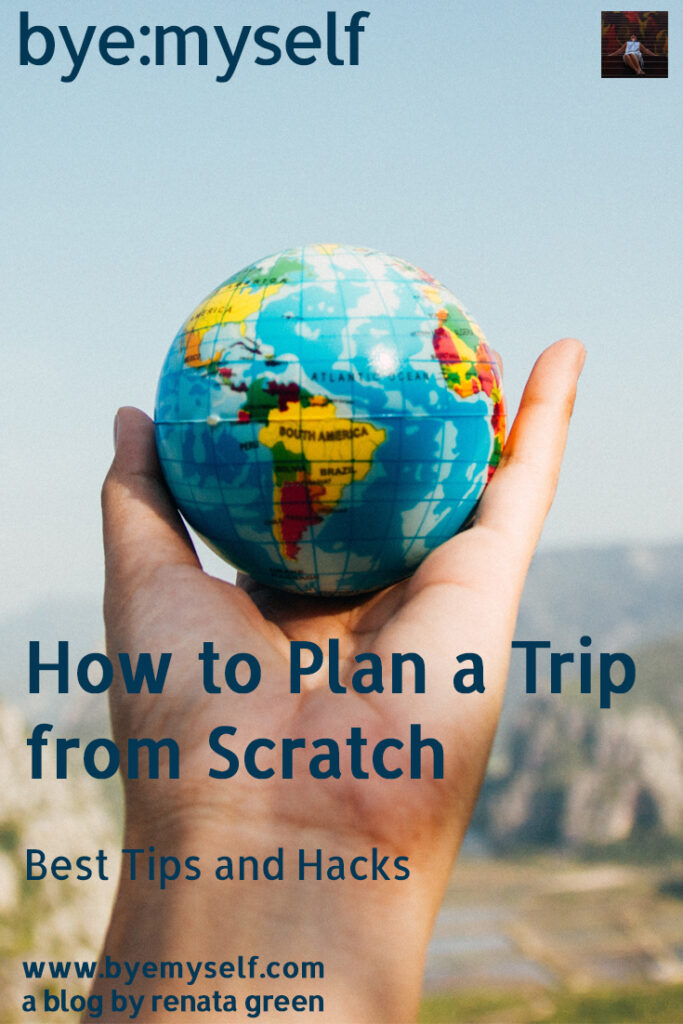

Note: I’m completing, editing, and updating his post regularly – last in December 2025.
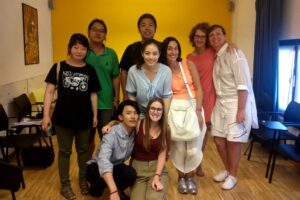
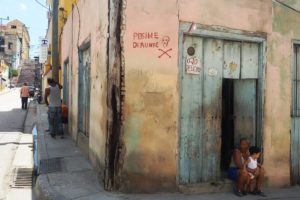
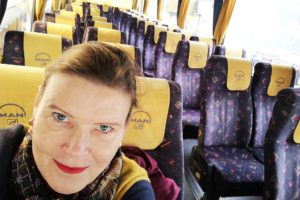





We have done quite a bit of trip planning on our own. It takes quite a bit of research and work! These are great points for putting together a trip.
Planning a trip from scratch can seem overwhelming, but breaking it down into simple steps can make the process much easier. Start by determining your travel budget, choosing your destination, and researching visa requirements if necessary. Next, decide on your transportation method, and book flights and accommodations. Consider purchasing travel insurance for added peace of mind. Once you’ve taken care of the basics, start planning activities and excursions, and make a rough itinerary. Don’t forget to research the local customs, culture, and cuisine, and make sure to have all necessary travel documents and vaccinations. With these steps in mind, you can plan a memorable and stress-free trip.
I totally agree with you – and that’s the reason why I put together an extended post not only on practical, bus also on psychological preparation called How to Surpass Pre-Travel Anxiety. You might want to check that one out, too.
One of my favorite parts of traveling is planning the trip. However, I have never planned an overseas trip myself or a trip longer than 12 days. You brought up a lot of good points I wouldn’t have thought of. Plus you had travel abroad tips I wasn’t aware of. Thanks for the insight.
I’m obsessed with planning. I actually have to discipline myself to leave room for….miracles 😉
lengthy but useful info. thanks for sharing
Well, since I wanted it to be comprehensive, it had to be lengthy. Hope it’s equally helpful 😉
Some really solid advice, there, Renata. At first I was puzzled by the title, because I’ve never about , it just happens. However even as a frequent traveller I took a couple of notes reading your post. Thanks for sharing.
That’s a great compliment – thanx so much. As a matter of fact, I think we travellers can always learn a thing or two from each other 😉
Hi Renata. Found you on female solo travel page and love your page !! Love that it’s straight to the point. I am currently planning my Scotland getaway and you have been MOST helpful !! Thank you, Anne
That is a really good tip particularly to those fresh to the blogosphere. Simple but very accurate information… Appreciate your sharing this one. A must-read article!|
Planning is one of my favorite elements of any trip. I love reading and researching a new destination, and trying to decide what I want to do and see when I’m there. I think I could have been a good travel agent, because I love looking at all the options and then weighing up all the options and coming up with the best options for traveling from A to B.
Good travel-agent – I sometimes think that of myself, too. The planning and organizing are a major part of my travels.
Great tips! I completely agree with the destinations you recommended for first-time solo travelers. I’d also add South Korea to it. It’s another very safe, friendly, and culturally rich place and it’s so easy to connect with other travelers and locals, especially in the party areas of Seoul.
Thanx for the tip – I also need to try it out myself since I haven’t been to South Korea yet, however, would love to go 🙂
Oh wow you are really organized!
I often do a bit of internet-staking when I have foud a destitaion of my liking, but more than that… nope, had to booking and start packing 😀
Yes, but being so organized has advantages and disadvantages, too – I’m less flexible than other people when things don’t go as planned 🙁
These are such great tips for anyone who needs to plan a trip by himself or herself from scratch. In fact, I too follow the process you mentioned, especially arriving in the city in the evening. it gives me time to relax before starting my exploration from the next day. Another thing I loved in your post is your recommendation about certain destinations for first-timers.
Hey, when even an avid traveller like you likes this post, I must have done something right 😉
Thanks for sharing these expert tips for planning a trip! I really like the idea of arriving to a city in the late evening, having the day to explore, and leaving the next day at noon. This really does seem like an excellent way to get the most out of a short time while still experiencing a lot that a city offers. You also make an interesting point about the different lengths of time it takes to cover the same distance depending on the public transportation available. Great food for thought in planning my next trip!
Great tips in this post Renata. many of the tools you mentioned I haven’t tried – I’ll have to check them out. I love that you recommended certain destinations for first-timers, very helpful.
These are great tips. I have only travelled in Canada, the US and many Caribbean Islands, never Europe. When determining what I want to see and do and the length of time, I will google tour groups to see what itineraries they have and then I will adapt my itinerary to that.
One of the pleasures of traveling is actually planning the trip itself. It is so exciting to set this process in motion. You have covered this aspect in great detail and in a systematic manner. For us, one of the important aspects that we spend a lot of time on is on planning our stay as we are quite finicky when it comes to accommodation when traveling.
Great tips! I too used to be surprised when people would ask for tips on planning a trip, but I realized not everyone has my planning or organization skills! 🙂 Picking where you want to go is always a great start! I also now look at other travel bloggers to see their tips about my destination ideas.
This is a great post for people just getting started. There is a lot that goes in to travel planning! We are old pros by now at doing all these steps.
Good tips for planning a trip. I usually plan a little in advance too, although I always under schedule so I can put something in that locals recommend that I didn’t know about. I really love Lonely Planet’s guide books and some European cities also have In Your Pocket guides that are my favorite. They are published ever other month or so with calendars of local events. I don’t mind hotels most of the time, but have loved my experiences with AirBnBs. I’ve even been invited for drinks and dinner with my host before. Other places, crickets, which is good too.